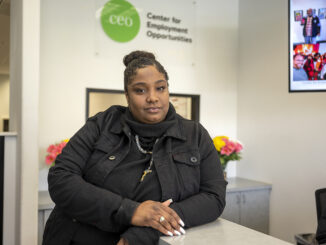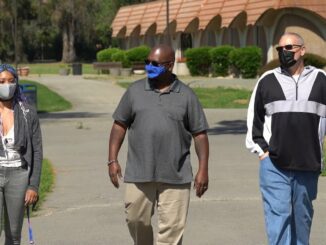
by Thea Marie Rood
North Bay residents who have barriers to employment can find themselves trapped in cycles of poverty, which can impact entire generations or entire neighborhoods. This is especially true for people who are considered “justice-involved”—meaning they have been arrested, convicted or served time in a county jail or state prison.
But a state-funded prison-to-employment program is designed to overcome those barriers and help give people a second chance. It also provides labor-strapped employers with skilled workers—and some financial incentives to hire them.
How does the program work? For job seekers, the emphasis is on getting them job-ready as quickly as possible, and some of that begins before they are released.
“I start working with a lot of them in their last three months (of their sentence),” says Nel Sweet Davis, an employability specialist/case manager for the Workforce Development Board of Solano County. “They are coached while they are incarcerated and (some enter) pre-apprenticeship programs that are a stepping stone—they can earn a certificate and get job offers directly from labor unions upon release.”
Other people access workforce services after they’ve left incarceration, and meet with specialists in the office.
“So for people we’re working with, some barriers are when they are getting out of jail or prison, they have gaps in employment while they were serving their sentence—possibly months or years,” says George Garcia, a program coordinator for the Sonoma County Workforce Investment Board. “Some are homeless and aren’t having basic needs met. They don’t have a valid ID, birth certificate, social security number—the right work documents.”
Caseworkers immediately begin helping job seekers procure that paperwork, and also put together a resume and “master application” that can be used for various job openings. “They can either use a computer and have an e-copy they have access to or they can print a hard copy,” Garcia explains, adding it is one of their job-readiness tools.
There is also some emotional support that helps job seekers.
“From the customers’ side, they have a lot of anxiety and fear of being rejected due to their background,” says Belen Escareno, talent specialist for CareerPoint, which serves Lake, Mendocino, Marin and Napa counties. “They also worry they don’t have enough knowledge—because they were incarcerated, they may not have a lot of employment history…and may not have completed high school.”
Caseworkers offer advice for handling background checks or questions about employment gaps and to stress the positive things in their lives. “I had one young lady who got a job offer from a marketing company in San Francisco,” Davis recalls. “When the employer notified her of a background check, she was honest, said something would likely come up on it, and she was willing to discuss it. Based on that, they told her, ‘We want to put your past behind you and hire you.’”
“The first couple of weeks, the first month, are always the toughest. If we can get them through that—help them focus on their training and not worry about housing and transportation—they usually do OK.”
George Garcia, program coordinator
Sonoma County Workforce investment Board
The workforce boards also work directly with employers, and Garcia says some industries are very open to hiring people with justice issues, particularly construction and truck-driving, which are high-paying, in-demand fields right now. But other employers will also “come off the fence” when they meet an individual in person—or hear about the financial incentives for hiring, Garcia says.
For example, there are Workforce Opportunity Tax credits available, as well as On-the-Job Training that will pay 50% of an employee’s wages for up to six months. There is even a state-sponsored Fidelity Bonding Program that functions like an insurance policy if an employee is high-risk and the employer is worried they’ll take a loss of some kind.
Once a match is made, the workforce board stays involved. It will pay union fees for the new employee, as well as buy work boots and tools. Transportation—in the form of bus passes, gas cards or Uber fees—is covered for the first month, as well as rent or utilities.
“As barriers come up, we help them so they can be successful,” Garcia explains. “The first couple of weeks, the first month, are always the toughest. If we can get them through that—help them focus on their training and not worry about housing and transportation—they usually do OK.”
There is also, of course, the big picture: allowing people to start over in our communities. “If anything, we should all be giving our re-entry population a second chance,” says Escareno. “At the end of the day, we’re all human. We all make mistakes.”
For more information, visit https://www.workforcealliancenorthbay.org/



